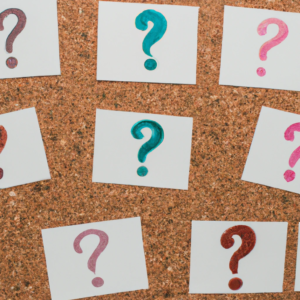The Science of Storytelling: Using Psychology to Engage Readers
Deprecated: The PSR-0 `Requests_...` class names in the Requests library are deprecated. Switch to the PSR-4 `WpOrg\Requests\...` class names at your earliest convenience. in /home3/writesq4/public_html/wp-includes/class-requests.php on line 24
Hey there, fellow authors and aspiring storytellers! I’m excited to dive into something that’s both a passion and a profession for me—storytelling. As a secondary teacher who juggles the worlds of writing and computer science, I’ve found that the most compelling stories are those that weave in a bit of psychology. Why? Because understanding how our readers think and feel can transform the way we tell stories. So, in this blog post, we’re going to explore the fascinating intersection of storytelling and psychology. Whether you’re penning your first novel or looking to add new depth to your writing, get ready to unlock the secrets of engaging your readers like never before!

Using Midjourney
Understanding Your Audience: The Key to Compelling Storytelling
The Psychology of Engagement: What Captivates Readers
Every great story begins with an understanding of who we’re writing for. It’s not just about crafting characters and plots; it’s about tapping into the emotions and thoughts of our readers. In this post, let’s explore how psychological principles like empathy, curiosity, and suspense keep readers hooked from the first page to the last.
Building Relatable Characters: The Power of Empathy
Our characters are the heart of our stories, and creating characters that resonate with readers is crucial. We’ll dive into techniques for developing multi-dimensional characters that readers can empathize with, making them invested in the journey from the outset.
For specific strategies on character development, check out “Building Character Backstories: Tips & Tricks for Rich Histories.”
Plot Twists and Tension: Keeping Readers on Their Toes
A story without surprises or tension is like a meal without flavor—it just doesn’t satisfy. In “Mastering Plot Twists: Captivate Your Readers”, we’ll discuss how to effectively use plot twists and build tension, using psychological triggers to keep readers eagerly turning pages.
The Role of Pacing: Balancing Action and Reflection
Pacing is a delicate dance. Too fast, and we risk overwhelming the reader; too slow, and we lose their interest. “Story Pacing Perfection: Engage Your Readers” will guide you through the art of pacing, ensuring your story ebbs and flows in a way that captivates your audience.

Using Midjourney
Crafting Emotional Resonance: The Heart of Storytelling
Emotional Triggers: Connecting with Readers on a Deeper Level
Stories that stir emotions are the ones that stay with us long after we’ve closed the book. In this subsection, we’ll examine how to use emotional triggers effectively to create a lasting impact on your readers.
Creating Vivid Settings: More Than Just a Backdrop
A story’s setting can do more than just provide a physical location—it can set the mood, evoke emotions, and enhance the narrative. Here, we’ll explore techniques for bringing settings to life and making them an integral part of your storytelling.
Dialogue: The Voice of Your Characters
Dialogue is a powerful tool in storytelling. It’s not just about what is said, but how it’s said. This section focuses on crafting dialogue that feels authentic and contributes to the psychological depth of your characters and story.
Read our post, “Mastering Dialogue: Techniques for Writing Authentic, Believable Dialogue that Moves the Story Forward,” for more tips on writing dialogue.
The Importance of Conflict: Driving the Story Forward
No story is complete without conflict. It’s the engine that drives the plot and develops characters. We’ll delve into different types of conflict and how to use them to create a compelling narrative that resonates with readers.

Frequently Asked Questions About Using Psychology to Engage Readers

Using Midjourney
Final Thoughts About Engaging Readers Using Psychology
As we wrap up our journey through the science of storytelling, remember that at the heart of every great story is an understanding of the human experience. Psychology isn’t just a tool; it’s the essence that breathes life into your characters, plots, and settings. Whether you’re crafting your first story or your fiftieth, keep these psychological principles in mind. They’re your secret weapon in creating stories that not only entertain but also resonate deeply with your readers. Happy writing, and here’s to stories that leave a lasting impression!
For more tips for engaging your readers, check out “Mastering Emotional Impact in Storytelling: The Ultimate Guide to Captivating Audiences.”






